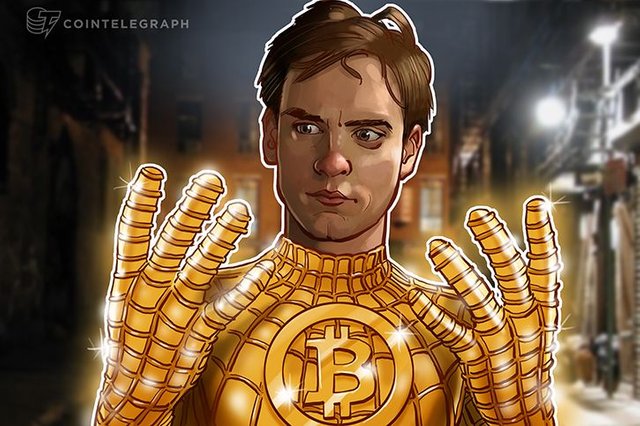
When 10,000 Bitcoins were used to buy two pizzas, the digital currency was a truly decentralized peer-to-peer payment network that operated across the globe instantly.
Today, the price has risen nearly a million-fold, but the network is no longer quite as functional as it was back in those days.
Bitcoin still struggles with its identity, as many would like it to revolutionize money, but they are equally happy sitting on hordes of it and watching it appreciate in value faster than perhaps any other asset in history.
A single dollar invested in Bitcoin on the original Bitcoin pizza day would be worth over $3 mln today.
While upgrades have been made to Bitcoin along the way, it looks like Bitcoin is becoming less of a payment network and is instead evolving into digital gold. The failure of SegWit2x, which aimed to decrease transaction costs and improve confirmation speed, failed for a number of reasons.
Some of them were good, and some were mere straw men. But at the end of the day, one thing is clear: there is clearly no rush to increase Bitcoin’s capacity.
No problem with digital gold
Those who once pledged their support of 2x have slowly turned their back on the fork. They’ve cited all sorts of reasons, primarily lack of consensus in the community. Of course, it was clear that there would be difficulties launching a hard fork just a few months after implementing the SegWit soft fork.
But the failure of the community and the Bitcoin development team to express any sense of urgency at fixing the scalability issue has had lasting effects. In fact, it has seriously skewed the way people now view Bitcoin.
Because of developers’ apathy when it comes to speeding transactions and lowering fees, the Bitcoin network has become much less useful as a payment network. The currency has now effectively evolved into an entirely new type of asset for investors to get excited about.
Progress has been made in advancing its investability with the announcement of futures, and the backing of a number of Wall Street investors, but when it has come to its retail adoption and bettering as a payment method things have been sluggish.
Digital-marketing agency Cooperatize.com’s Co-Founder Roger Wu puts it quite simply:
“The biggest thing is are people willing to pay in Bitcoin?” Wu said. “The reality is that most of our customers are other businesses and other businesses don’t use Bitcoin."
Of course, this is also a two-edged sword as if people are not willing to spend their Bitcoin; then merchants will not race to make it a reality, which will again give people no reason to spend their digital gold.
“It’s quite possible that after a while you just realize it’s not worth the cost of tooling up to take it and you decide to drop it if the publicity has run its course,” said David Yermack, a professor at New York University Stern School of Business who studies Bitcoin.
Morgan Stanley delved deeper into the possibilities of Bitcoin and Blockchain in a 33-page report back in June.
“The Blockchain underpinnings of most cryptocurrencies scale too poorly for most currency-like uses,” Morgan Stanley analysts wrote. “Time to clear single transactions can often be from 10 minutes to more than an hour.”
Thus, the view that Bitcoin is digital gold sits nicely with the majority who are making huge profits off their investments and they would be damned to see some contentious rule change on the protocol damaging all that.
Still opportunities to be both
So, if Bitcoin has taken big strides towards being digital gold, while also leaving its payment system roots behind, what does this spell for the so-called ‘future of money’? There are still chances for digital gold to work as a payment method though.
It is good that Bitcoin is settling on its core function, even if that function if different to what the white paper prescribed years ago. If Bitcoin becomes a solid, trustless and dependable store of wealth, then its payment network can be built on top of that base.
The most often-cited example of how a better payment system can come out of Bitcoin is the Lightning Network upgrade. This speeds things up dramatically as a network of cached transactions are sent between users rather than on-chain transactions.
Pick a direction
Having Bitcoin head solidly down one corridor, in this case the digital gold one, you are creating a digital asset first that can be used as a payment network later. The reverse would have dire consequences, and it is the likes of Bitcoin Cash and other altcoins who are trying to be payment-first.
A payment system needs stable liquidity, and that stability cannot be reached if you aim to be a payment network before you are an established asset. More liquidy can only help settle down things like cryptocurrencies, as even the volatility of Bitcoin has eased as more money has entered the market.
Hi! I am a robot. I just upvoted you! I found similar content that readers might be interested in:
https://cointelegraph.com/news/segwit2xs-failure-confirms-bitcoins-status-as-digital-gold
Downvoting a post can decrease pending rewards and make it less visible. Common reasons:
Submit
interest..
Downvoting a post can decrease pending rewards and make it less visible. Common reasons:
Submit
Thanks
Downvoting a post can decrease pending rewards and make it less visible. Common reasons:
Submit